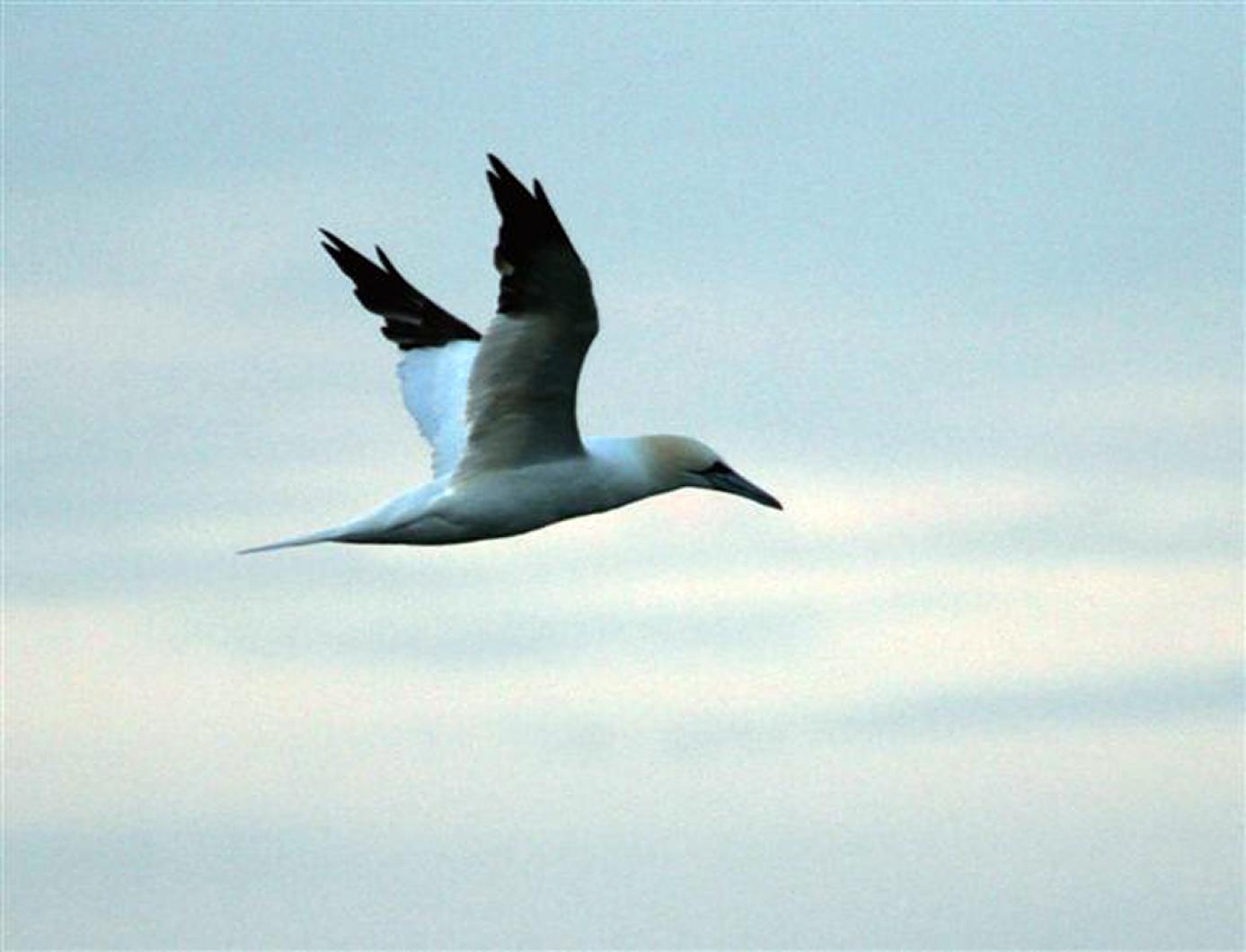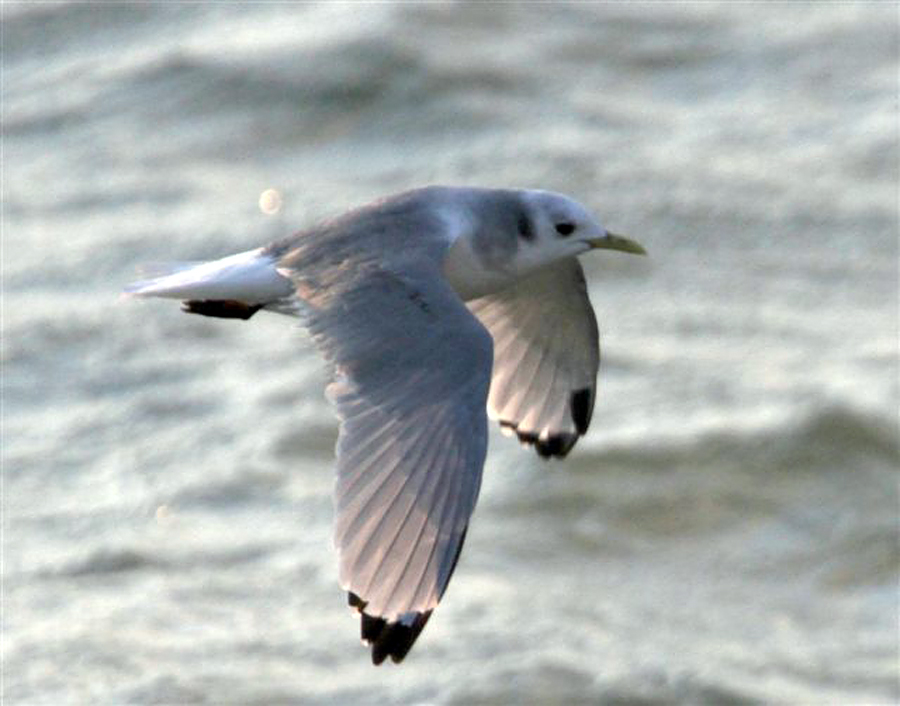The 112th annual Christmas Bird Count has been completed nationwide. The Vineyard started participating in the count years later, so conducted its 52nd annual CBC on Jan. 2.
Why, oh why, didn’t we have the weather of Jan. 1? Instead of a balmy, calm day with temperature in the mid-40s, 65 participants chose to head into the field to count the numbers of birds on the Island in very different weather conditions. The temperatures were lower and the 25 knots of wind and cloudy weather produced a windchill and eventually a windburn to the 67 field birders.
What do birds do in that type of weather? They hunker down, and if you are waterfowl you seek a lee shore. How do you entice a bird to come out of the puckerbrush to be counted when the wind is howling? Or find a duck that is floating in and out of grasses on a lee shore? It is a difficult task to say the least. You can try to mimic an owl to make the birds curious, or you can “pish,” which is also a noise that might attract birds. However, would you come out of a nice warm bush or clump of grass into the wind because some nutcase was making a weird sound? Not likely! We did alright considering the weather, however.
Rob Culbert, the cocompiler and statistician par excellence, said combined Vineyard teams came up with a preliminary total number of 119 different species. We counted 21,730 individuals this year. This compared with previous years as follows: In 2010 we counted 15,926 individuals, in 2009 we counted 32,114, and in 2008 we counted 82,794. The 2010 count was low due to less participants. So why so few individuals found this year? It is probably due to lousy weather and a general decline in the number of birds found on the Island. There has been loss of habitat and food resources for many species here and also on the birds’ migratory routes.
The following is the preliminary list of species found on the Vineyard on Jan. 2, 2012: snow and Canada goose; brant; mute swan; gadwall; American wigeon; American black duck; mallard; blue-winged and green-winged teal; canvasback; ring-necked duck; greater and lesser scaup; common eider; harlequin duck; surf, white-winged and black scoters; long-tailed duck; bufflehead; common goldeneye; ruddy duck; ring-necked pheasant; feral turkey; red-throated and common loons; pied-billed, horned and red-necked grebes; northern gannets; double-crested and great cormorants; great blue and black-crowned night herons; turkey vulture; bald eagle; northern harrier; sharp-shinned, Cooper’s and red-tailed hawks; American kestrel; merlin; peregrine falcon; Virginia rail; American coot; black-bellied plover; ruddy turnstone; sanderling; purple sandpiper; dunlin; American woodcock; Bonaparte’s, ring-billed, herring, Iceland, lesser and great black-backed gulls; black-legged kittiwake; dovekie; razorbill; rock pigeon; mourning dove; barn, eastern screech, great horned and northern saw-whet owls; belted kingfisher; yellow-bellied sapsucker; red-bellied, downy and hairy woodpeckers; northern flicker; eastern phoebe; blue jay; American and fish crows; horned lark; black-capped chickadee; tufted titmouse; red and white-breasted nuthatches; brown creeper; Carolina and winter wrens; golden-crowned and ruby-crowned kinglets; eastern bluebirds; hermit thrush; American robin; gray catbird; northern mockingbird; European starling; yellow-rumped, pine, and palm warblers; yellow-breasted chat; eastern towhee; American tree, chipping, field, savannah, fox, song, swamp and white-throated sparrows; dark-eyed juncos; snow bunting; northern cardinal; red-winged blackbird; eastern meadowlark, common grackle; Baltimore oriole; house finch; American goldfinch, and house sparrow.
Rob Culbert and I would like to thank Penny Uhlendorf and crew for their help setting up the Wakeman Center for our wrap-up, and all the teams and team captains for their hard fieldwork. A special thanks goes to the volunteers who sat by the phone at Felix Neck to receive the feeder count numbers. We also would like to thank Morning Glory Farm for the soup and Island Grocer for the finger food and all the team members that brought munchies to add to the fare.
It was especially great to find a fish crow roost for the second year, particularly because the team saw a mixed flock of American and fish crows, so they not only heard the different calls, but also were able to see the size differences. We were sorry to have missed the snowy owl and, of all birds, the cedar waxwings. If we find other birds during the count period we will include those in future Bird News columns.
In the meantime, start your year list and make sure that you report your bird sightings to the Martha’s Vineyard Bird Hotline at 508-645-2913 or e-mail to birds@mvgazette.com.
Susan B. Whiting is the coauthor of Vineyard Birds and Vineyard Birds II. Her Web site is vineyardbirds2.com.





Comments
Comment policy »